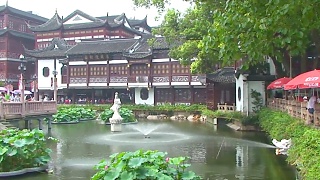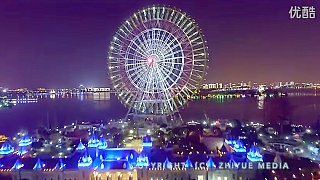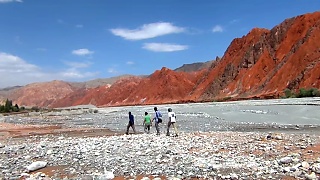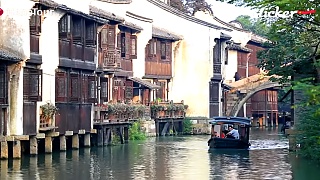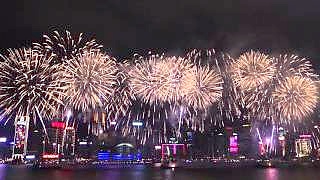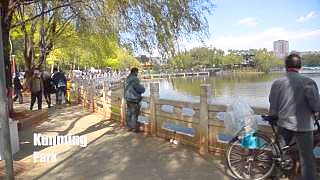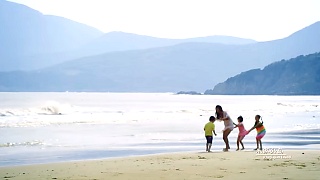With Wei's Travel ...
[640],shadow=true,start=,stop=00:00 Travel Highlights 行程精华预览
01:16 Lujiazui Financial City 陆家嘴金融城
02:41 Shanghai Tower 上海中心
05:45 Shanghai Jinmao Tower 金茂大厦
12:06 Financial City Skywalk 金融城空中步道
25:03 Lujiazui Roundabout 陆家嘴大环岛
32:54 Super Brand Mall 上海正大广场
41:08 BinGo Weekend Market 正大滨购市集
47:18 Riverside Restaurant Street 滨江美食街
49:21 Pudong Riverside Scenic Trail 浦东滨江景观道
56:00 Riverside Viewing Corridor 浦东滨江观景长廊
01:01:07 Disney Clock Tower Show 迪士尼钟楼报时秀
The total economic output of Shanghai Lujiazui Financial City exceeds 500 billion yuan, of which the added value of the financial industry reaches 358.5 billion yuan. It has gathered more than 300,000 financial talents and has the Shanghai Stock Exchange, Shanghai Futures Exchange, China Financial Futures Exchange, China International Gold Trading Center, etc., as well as more than 40% of the country's foreign-funded corporate banks, more than 90% of foreign-funded private equity institutions, and more than 90% of foreign-funded asset management institutions. More than 340 of the world's top 500 companies have established offices in Lujiazui, and 115 multinational companies have set up regional headquarters here.
Lujiazui gathers 12 national-level factor markets and financial infrastructure, and more than 6,000 Chinese and foreign financial institutions, including 901 licensed financial institutions, accounting for 60% of Shanghai. It is a veritable world-class financial center in China and a super high-rise skyscraper in Shanghai. The area with the highest concentration of buildings.
Shanghai is one of China's most dynamic and cosmopolitan cities, blending a rich history with modern skyscrapers and vibrant culture. Here's what you need to know as a tourist visiting Shanghai:
Historical and Cultural Landmarks:
The Bund: This iconic waterfront promenade along the Huangpu River features colonial-era buildings on one side and futuristic skyscrapers on the other, offering stunning views of Shanghai's skyline.
Yu Garden: Dating back to the Ming dynasty, Yu Garden is a classical Chinese garden with pavilions, ponds, and rockeries. The nearby Yu Garden Bazaar is a great place to shop for souvenirs and traditional crafts.
Shanghai Museum: Home to an extensive collection of Chinese art and artifacts, including bronzes, ceramics, paintings, and calligraphy, the Shanghai Museum is a must-visit for history and art enthusiasts.
Jing'an Temple: One of Shanghai's most famous Buddhist temples, Jing'an Temple is known for its beautiful architecture, peaceful atmosphere, and towering golden Buddha statue.
Modern Attractions:
Shanghai Tower: Ascend to the observation deck of this iconic skyscraper, the tallest in China and the second-tallest in the world, for panoramic views of the city.
The Oriental Pearl TV Tower: Another iconic landmark, this futuristic tower offers observation decks, a glass-bottomed skywalk, and a revolving restaurant.
Shanghai Disneyland: Located in the Pudong district, Shanghai Disneyland offers a magical experience for visitors of all ages with its themed lands, attractions, and entertainment.
Shopping and Entertainment:
Nanjing Road: One of the world's busiest shopping streets, Nanjing Road is lined with department stores, boutiques, and restaurants. Don't miss the nearby pedestrian-friendly Nanjing Road East, known for its lively atmosphere and street performers.
Xintiandi: This upscale shopping, dining, and entertainment district features a mix of traditional Shikumen-style buildings and modern amenities, making it a popular destination for locals and tourists alike.
French Concession: Explore this historic neighborhood known for its tree-lined streets, charming cafes, boutiques, and art galleries.
Culinary Delights:
Shanghai Cuisine: Sample local specialties such as xiaolongbao (soup dumplings), shengjianbao (pan-fried dumplings), and Shanghai-style noodles.
Street Food: Wander through the city's bustling food markets and snack streets to taste a variety of street foods, from savory pancakes to grilled skewers.
Practical Tips:
Transportation: Shanghai has an efficient public transportation system, including the subway, buses, and taxis. Consider purchasing a rechargeable transportation card for convenience.
Language: While Mandarin is the official language, English is widely spoken in tourist areas, hotels, and restaurants.
Weather: Shanghai experiences four distinct seasons, with hot, humid summers and chilly winters. The best times to visit are spring (March to May) and autumn (September to November) when the weather is mild and comfortable.
Etiquette: Respect local customs and traditions, such as using polite language and avoiding loud behavior in public places.
Shanghai offers a captivating blend of old and new, with its historic landmarks, modern skyscrapers, vibrant culture, and delectable cuisine. Whether you're interested in history, architecture, shopping, or dining, Shanghai has something to offer every type of visitor.
 Night walk in LuJiaZui financial district, ShangHai
Night walk in LuJiaZui financial district, ShangHai

